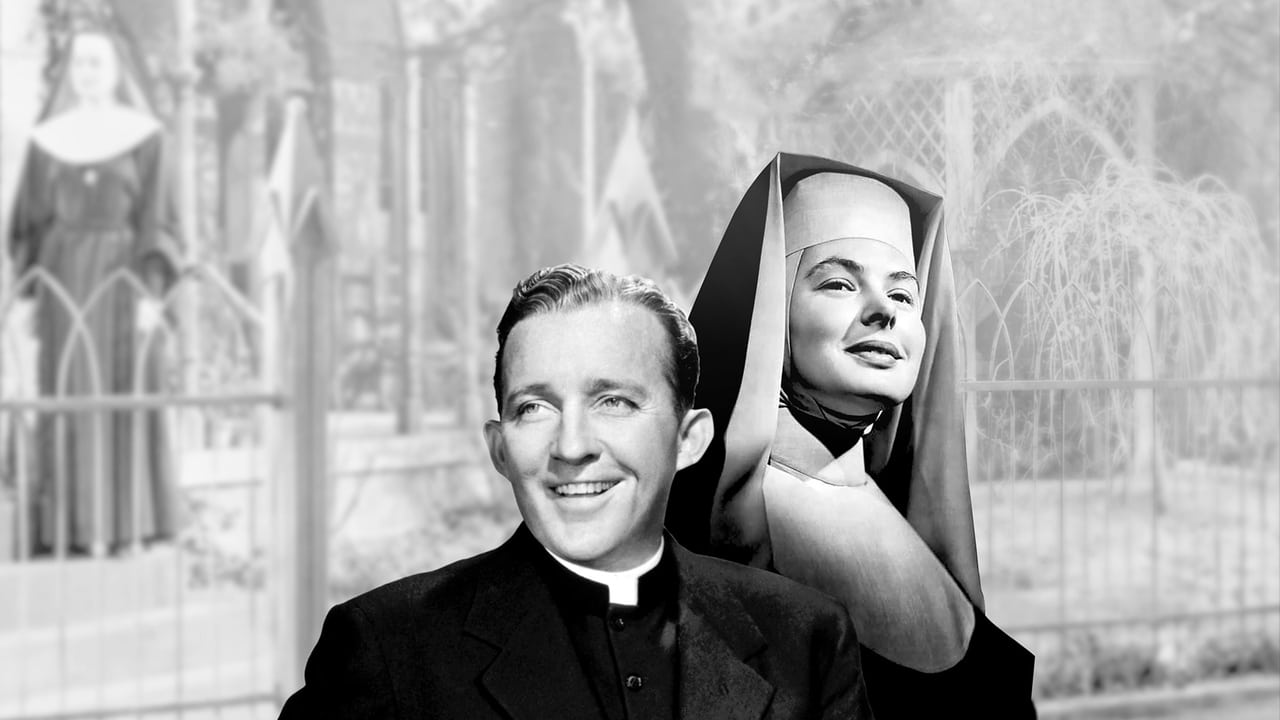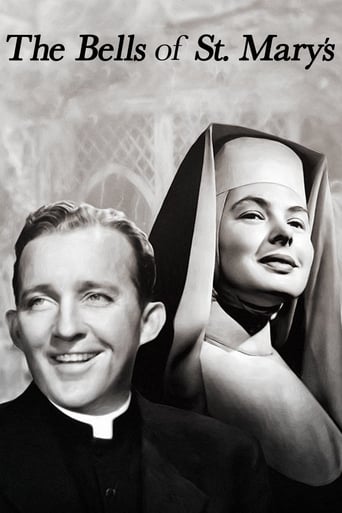

Very best movie i ever watch
... View Moredisgusting, overrated, pointless
... View MoreThis is a small, humorous movie in some ways, but it has a huge heart. What a nice experience.
... View MoreJust intense enough to provide a much-needed diversion, just lightweight enough to make you forget about it soon after it’s over. It’s not exactly “good,” per se, but it does what it sets out to do in terms of putting us on edge, which makes it … successful?
... View MoreI am 66 years old and went to a Catholic school run by holy sisters. My first grade teacher dressed almost exactly like Ingrid Bergman. The movie is very authentic in its portrayal of a school run by nuns. I have seen it many times. (SPOILER!) I really do cry when Father O'Malley tells Sister Benedict that she is leaving because she has TB. Bergman's acting is superb throughout, and Bing Crosby is a natural as a Catholic priest. One of my favorite movies of all time. This is how I grew up.
... View MoreI watched this last night, after not having seen it in decades. I vaguely remembered a plot about getting a building for a Catholic school, and remembering it as more of a Christmas movie, so I was surprised at there only being snow in about five minutes of the film. It's the little touches that Crosby, Bergman, and director McCarey put in that make this film endearing. There's a sly line by Father O'Malley (Crosby) when Sis. Benedict (Bergman) calls on a student to recite: "Luther? How'd HE get in here?" There's another little bit involving a kitten who gets into O'Malley's straw hat while he's making an introductory speech to the nuns which is absolutely hilarious! And the adlibbed children's Nativity play is totally heartwarming in its honest simplicity, in an age when churches now try to play "can you top this?" with overproduced Christmas spectaculars. (A side note: today's viewers might be a bit taken aback that the Pledge of Allegiance as recited by the students omits the words "under God". That was a reflection of the times, not of "liberal Hollywood". The film was produced in 1945; the words "under God" would not be added for another eight years as a post-war reaction to the rise of Communism. The recitation of the Pledge in the film is a verbatim reflection of the way every school child in America said it in 1945.)
... View MoreA priest and a nun lead the effort to replace a crumbling church school. This pleasant sequel to "Going May Way" is a nice blend of comedy and drama. Although the earlier film won the Best Picture Oscar, this one is actually better, mainly because the script doesn't meander as much as the first film and because of the presence of Bergman. The actress is terrific and works well with Crosby, who continues his Oscar-winning role as Father O'Malley. This is the movie that's seen on the Bedford Falls movie theater marquee in "It's a Wonderful Life." Travers, who played an angel in that Frank Capra film, here plays a grumpy old man who changes his ways.
... View MoreI was mainly interested in this film because the lead actor, singer of "White Christmas", won an Oscar for playing this character (in the film Going My Way), and it was apparently really popular at the cinemas, and it being number 20 on The Ultimate Film certainly proves that. Oscar nominated Bing Crosby reprises his role as Father Chuck O'Malley, the unconventional priest, who is sent to St. Mary's Catholic school on the verge of condemnation. O'Malley and principal Sister Mary Benedict (Golden Globe winning, and Oscar nominated Ingrid Bergman) work together both with the children in all their situations, e.g. fights, Christmas plays, passing grades, especially young Patricia 'Patsy' Gallagher (Joan Carroll), but they also work to save the school. Of course O'Malley and the Sister have their good-natured disagreements, but they both make sure all the kids, particularly smart Patsy make the best of their time at the school. I should mention the only person of helping them save the school, self confessed grumpy guy Horace P. Bogardus (It's a Wonderful Life's Henry Travers) does eventually change his ways, and agrees with his newfound kindness to help them. Also starring Martha Sleeper as Mary Gallagher (Patsy's mother), William Gargan as Joe Gallagher (Patsy's father), Ruth Donnelly as Sister Michael, Richard Tyler as Eddie Breen, Una O'Connor as Mrs. Breen and Rhys Williams as Dr. McKay. It won the Oscar for Best Sound, and it was nominated for Best Director for Leo McCarey (Duck Soup, An Affair to Remember), Best Film Editing, Best Song for "Aren't You Glad You're You", Best Music for Robert Emmett Dolan and Best Picture. It was number 20 on The Ultimate Film. Good!
... View More